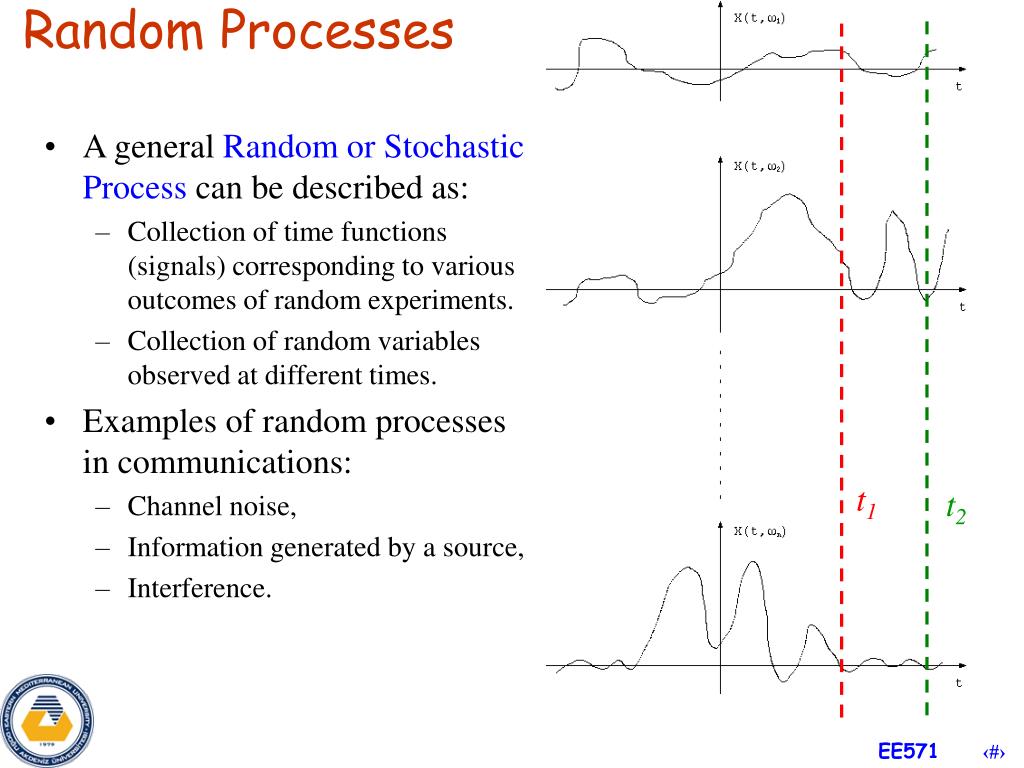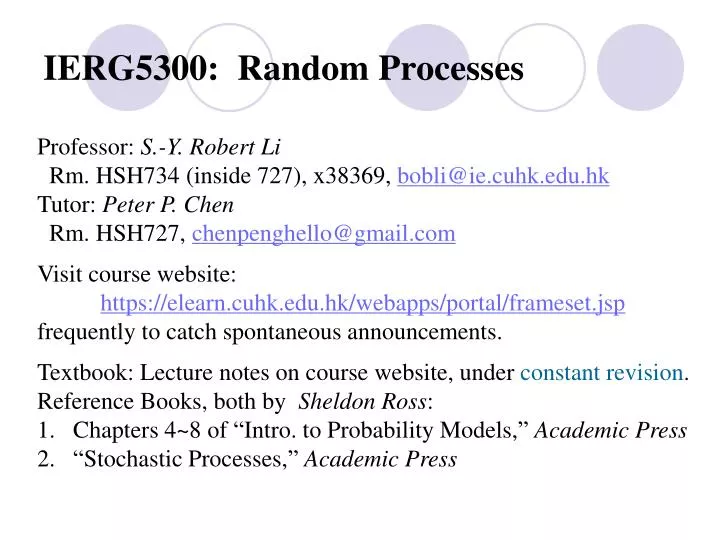
Random processes the random process model, types of random processes, stationarity, autocorrelation.Here, we measure t in hours, but t can take any real value between 9 and 16. It is often necessary to generate realizations of nonstationary random processes for the simulation of random environments.


#Random processes pdf
Pairs of random variables joint and marginal PMF, joint CDF, joint and marginal PDF.Gaussian random variables, delta functions and mixed random variables, functions of continuous random variables, derived distributions, conditional PDF Random Processes: A random process may be thought of as a process where the outcome is probabilistic (also called stochastic) rather than deterministic in.Continuous random variables, probability density function (PDF), expectation.Expected values,functions of one discrete random variable, variance and standard deviation, conditional PMF.Easily work with regular or irregular, scalar or vector, single or multiple time. Discrete random variables probability mass function (PMF), cumulative distribution function (CDF) A random process models the progression of a system over time, where the evolution is random rather than deterministic. Random Processes Directly simulate one or several paths for any process.Strictly speaking, only a good background in the. Sequential experiments, tree diagrams, counting methods, independent trials This text has as its object an introduction to elements of the theory of random processes.Experiments, models, probability axioms, conditional probability, independent events Random processes are classied according to the type of the index variable and classi-cation of the random variables obtained from samples of the random process.Random processes and their characterization, autocorrelation function.Ĭredits and contact hours: 3 credits 1 hour and 20-minute session twice a week, every week Linear time invariant system – System transfer function – Linear systems with random inputs – Auto correlation and cross correlation functions of input and output.Course catalog description: Probability and its axioms, conditional probability, independence, counting, random variables and distributions, functions of random variables, expectations, order statistics, central limit theorem, confidence intervals, hypothesis testing, estimation of random variables. UNIT IV CORRELATION AND SPECTRAL DENSITIESĪuto correlation functions – Cross correlation functions – Properties – Power spectral density – Cross spectral density – Properties. Analysis of random phenomena associated with communications, signal processing, and computer engineering applications. UNIT III RANDOM PROCESSESĬlassification – Stationary process – Markov process – Markov chain – Poisson process – Random telegraph process. Joint distributions – Marginal and conditional distributions – Covariance – Correlation an linear regression – Transformation of random variables – Central limit theorem (for independent and identically distributed random variables). UNIT II TWO – DIMENSIONAL RANDOM VARIABLES Prerequisites: MATH 115, Functions of a real variable (or equivalent), and STATS 217, Introduction to Stochastic Processes (or equivalent). Probability – Axioms of probability – Conditional probability – Baye‘s theorem – Discrete and continuous random variables – Moments – Moment generating functions – Binomial, Poisson, Geometric, Uniform, Exponential and Normal distributions. To understand the significance of linear systems with random.To understand the concept of correlation and spectral.or (2) the nature of the generating process is inherently random.
#Random processes series
A time series may be nondeterministic because: (1) all the information necessary to describe it explicitly is not available, although it might be in principle. To understand the basic concepts of random processes which are widely used in IT random aspect that prevents its behavior from being described explicitly.To understand the basic concepts of probability, one and two dimensional random variables and to introduce some standard distributions applicable to engineering which can describe real life.To provide necessary basic concepts in probability and random processes for applications such as random signals, linear systems in communication.


 0 kommentar(er)
0 kommentar(er)
